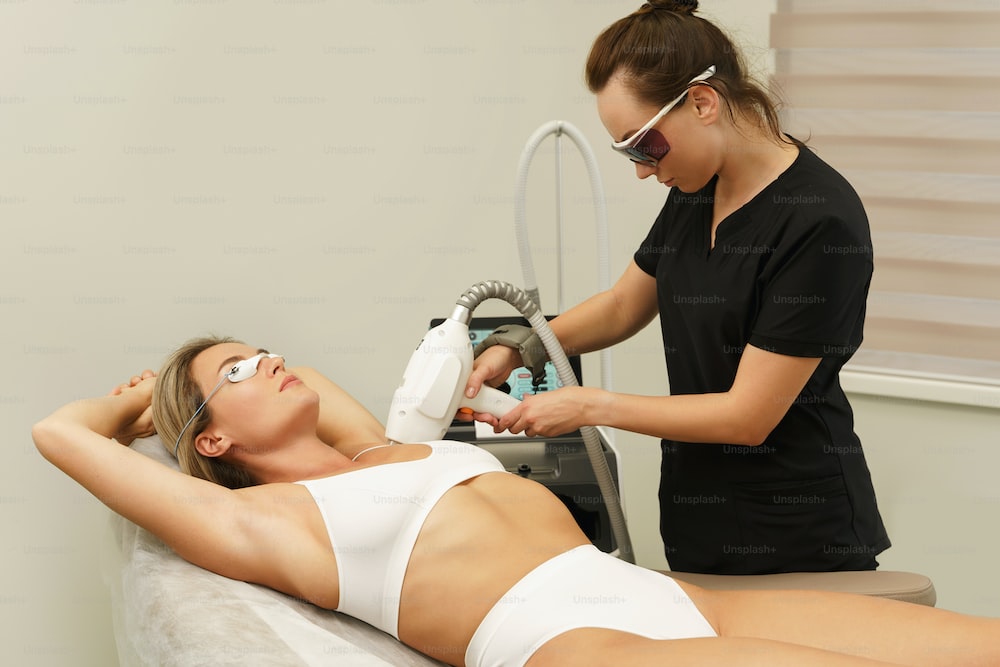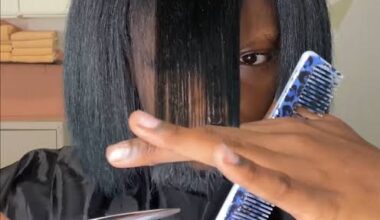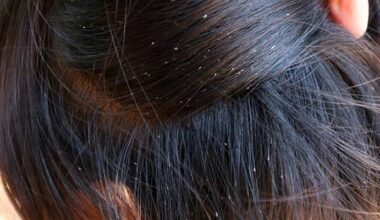Intense pulse laser (IPL) therapy, also known as photofacial, is a non-surgical cosmetic procedure that utilizes light energy to improve the color and texture of the skin. It is a popular treatment option for various skin concerns, such as aging signs, unwanted hair, pigmentation issues, scars, and spider veins. In this comprehensive guide, we will delve into the world of IPL, exploring its mechanism, applications, safety, and effectiveness.
Understanding Intense Pulse Laser Therapy
IPL therapy operates on the same principle as laser therapy but with a distinct difference. While lasers emit a focused beam of single-wavelength light energy, IPL devices release multiple wavelengths of light in a scattered manner, similar to a photo flash. This multi-wavelength approach allows IPL to treat larger areas of the skin more efficiently compared to lasers, which provide a more targeted treatment.
The procedure involves the use of a handheld device that emits light pulses onto the skin. These pulses penetrate the dermis, the second layer of the skin, without causing harm to the epidermis, the top layer. The light energy is then absorbed by the specific target, whether it be pigmented cells or hair follicles. The absorbed energy is converted into heat, which destroys the targeted cells or follicles, prompting the body to naturally eliminate them.
Applications of Intense Pulse Laser Therapy
Intense pulse laser therapy offers a versatile range of applications in cosmetic skin treatments. Let’s explore some of the most common conditions that can be addressed using IPL:
1. Signs of Aging
IPL can effectively reduce the appearance of aging signs such as fine lines, wrinkles, and age spots. The scattered light energy targets and breaks down the pigmented cells responsible for these blemishes, resulting in a more youthful and even complexion.
2. Unwanted Hair
IPL is a popular choice for long-term hair removal. The light energy targets the melanin in the hair follicles, heating and damaging them to hinder future hair growth. Multiple sessions are usually required to achieve optimal results.
3. Pigmentation Issues
IPL can help lighten and even out darker patches of skin caused by conditions like freckles, birthmarks, and hyperpigmentation. The scattered light energy breaks down the excess melanin, leading to a more balanced skin tone.
4. Scars and Acne Marks
For individuals with acne scars or post-inflammatory hyperpigmentation, IPL can be an effective treatment option. The light energy targets the damaged cells, stimulating the skin’s natural healing process and promoting the growth of smoother, healthier tissue.
5. Spider Veins
IPL therapy can also reduce the appearance of spider veins, which are small, dilated blood vessels commonly found on the face and legs. The scattered light energy heats and destroys the blood vessels, causing them to collapse and fade over time.
Safety and Effectiveness of Intense Pulse Laser Therapy
When performed by a skilled and experienced dermatologist or healthcare professional, IPL therapy is generally considered safe and effective. However, certain factors must be taken into consideration to ensure the suitability of the treatment for an individual.
Suitability for IPL Treatment
While IPL is safe for most people, there are certain contraindications that should be considered:
- Pregnant women should avoid IPL therapy due to the potential risks involved.
- Individuals who are currently taking blood thinners or have a history of excessive bleeding should consult their healthcare provider before undergoing IPL.
- Use of the acne drug Accutane, presence of active acne, skin resurfacing disorders, susceptibility to keloid scarring, severe scarring, or recent severe sunburn are factors that may make IPL treatment unsuitable for some individuals.
Risks and Side Effects
As with any medical procedure, IPL therapy carries certain risks and potential side effects, although they are generally rare. These include:
- Pain: Some individuals may experience discomfort during the treatment, often described as a pinching or snapping sensation on the skin. Local anesthetics or chilling gels can be used to minimize discomfort.
- Skin discoloration: In rare cases, IPL treatment can lead to temporary or permanent skin discoloration. This risk is higher for individuals with darker skin tones.
- Swelling and redness: It is common to experience temporary swelling and redness immediately after the procedure. This usually subsides within a few hours or a few days.
- Infection, bleeding, scarring, and crusting are also potential risks, although they are extremely rare.
Preparing for Intense Pulse Laser Therapy
Before undergoing IPL treatment, it is important to prepare properly to ensure the best possible outcome. Here are some guidelines to follow:
- Consultation with a dermatologist: Prior to treatment, schedule a consultation with a dermatologist to discuss your specific goals, potential benefits, side effects, and complications associated with IPL therapy.
- Avoid sun exposure: For at least two weeks before the procedure, avoid sunbathing, tanning beds, and excessive sun exposure. This helps to minimize the risk of skin damage and complications during treatment.
- Discontinue certain treatments and medications: Your dermatologist may advise you to avoid waxing, chemical peels, collagen injections, and certain medications such as aspirin, anti-inflammatory drugs, or herbal supplements for a specified period before the procedure. These substances can increase the risk of bleeding and other complications.
The Intense Pulse Laser Treatment Process

During an IPL session, the dermatologist or healthcare professional will use a handheld device to deliver the light therapy. The treatment process typically follows these steps:
- Cleansing: The treatment area is thoroughly cleansed to remove any dirt, oil, or skincare products.
- Application of cool gel: A cool gel is applied to the skin to enhance the effectiveness of the IPL and provide a protective barrier.
- Light pulses: The handheld IPL device is used to deliver the light pulses to the targeted area. Dark glasses are worn to protect the eyes from the intense light.
- Sensations during treatment: Some individuals may experience a pinching or snapping sensation during the procedure, similar to the feeling of an elastic band being snapped on the skin. Numbing creams or gels can be applied to minimize any discomfort.
- Treatment duration: The length of the treatment session depends on the size of the area being treated. Typically, a session lasts between 20 and 30 minutes, although larger areas may require more time.
- Number of sessions: The number of IPL sessions needed varies depending on the individual’s treatment plan and desired results. Most people require multiple sessions to achieve optimal outcomes.
- Post-treatment care: Immediately after the procedure, the treated area may appear red or pink, similar to a mild sunburn. The dermatologist may recommend using a cool pack or moist cloth to alleviate the stinging sensation. It is important to avoid applying makeup or lotion to the treated area for at least 24 hours or until all swelling has subsided. After this period, regular moisturization is recommended for at least three months.
Alternatives to Intense Pulse Laser Therapy
While IPL therapy offers a range of benefits, it may not be the ideal treatment for everyone. Consider these alternatives when weighing your options:
Fraxel Treatment
Fraxel treatment, a form of laser therapy, is an alternative to IPL for reducing signs of aging. It is a non-painful procedure that typically requires only one session, unlike IPL, which often necessitates multiple treatments. Fraxel treatment can be performed on the face, neck, shoulders, and chest. However, it shares potential side effects with IPL due to its laser nature.
Microdermabrasion
Microdermabrasion is another option for rejuvenating the skin’s appearance. It involves the removal of the outer layer of dead skin cells, exposing the fresh, newer skin underneath. While the results of microdermabrasion may not be as long-lasting as IPL or Fraxel treatment, it is a more affordable, pain-free alternative with fewer potential side effects and a shorter recovery time.
Waxing and Shaving
For hair removal, traditional methods such as waxing or shaving can be considered. Although the results are temporary and require more frequent maintenance compared to IPL, these methods are less painful, involve fewer complications, and require little to no recovery time.
Conclusion
Intense pulse laser therapy, or IPL, is a powerful tool in cosmetic skin treatments, offering a wide range of applications and benefits. From reducing signs of aging to removing unwanted hair and addressing various skin concerns, IPL has proven to be a versatile and effective treatment option. However, it is essential to consult with a dermatologist or healthcare professional to determine the suitability of IPL for your specific needs and to understand the potential risks and side effects involved. By following proper preparation and aftercare guidelines, you can enjoy the transformative effects of IPL while maintaining the health and vitality of your skin.






